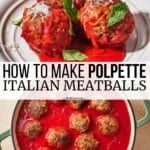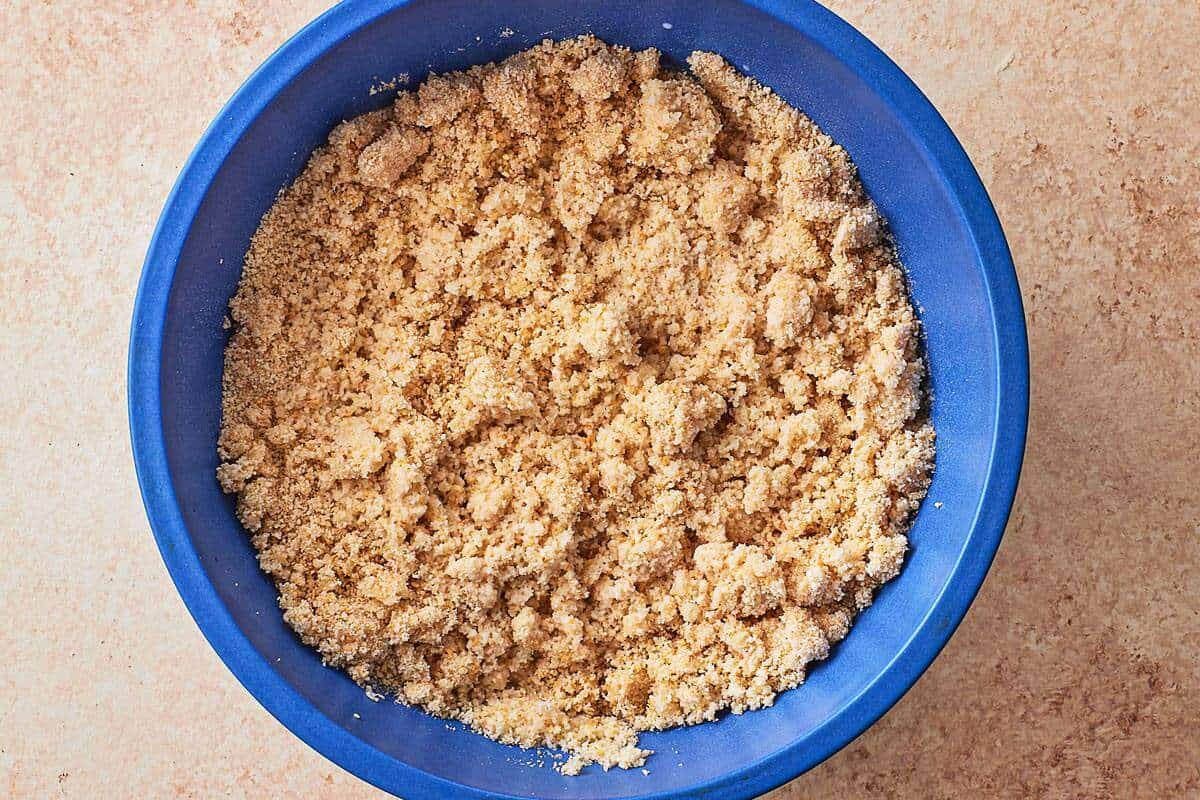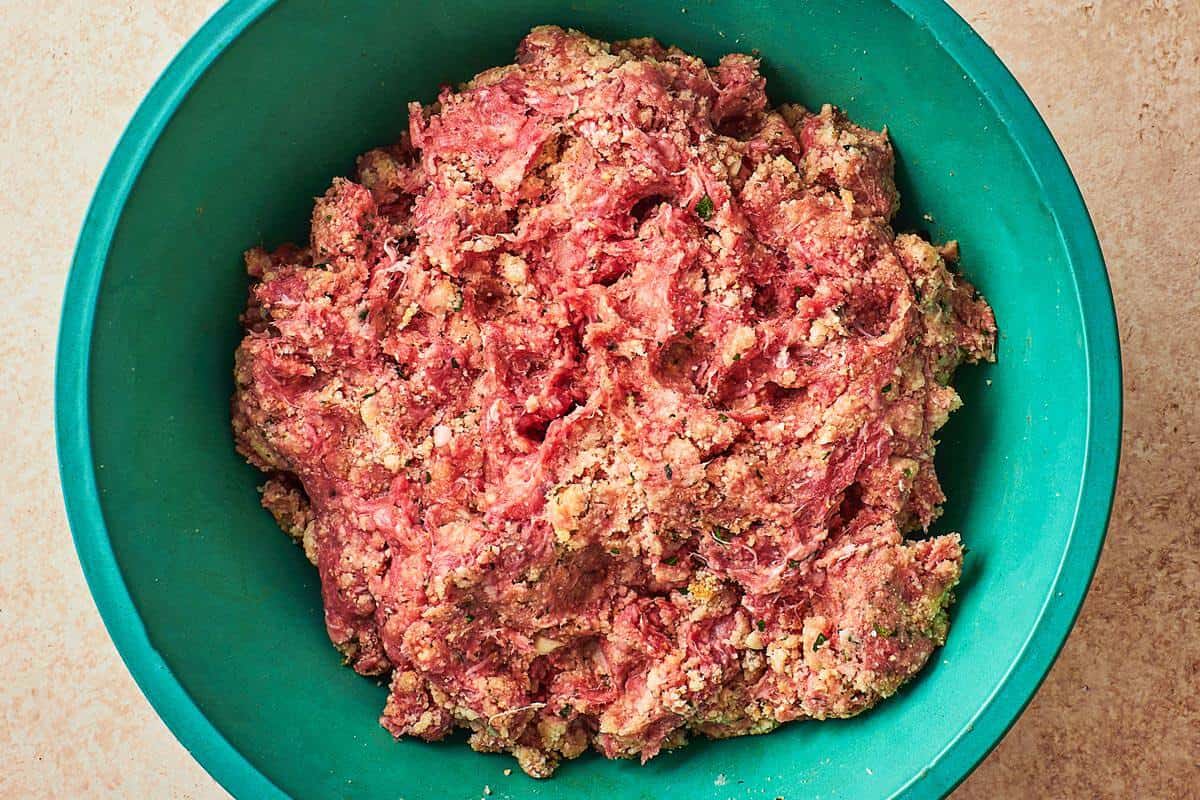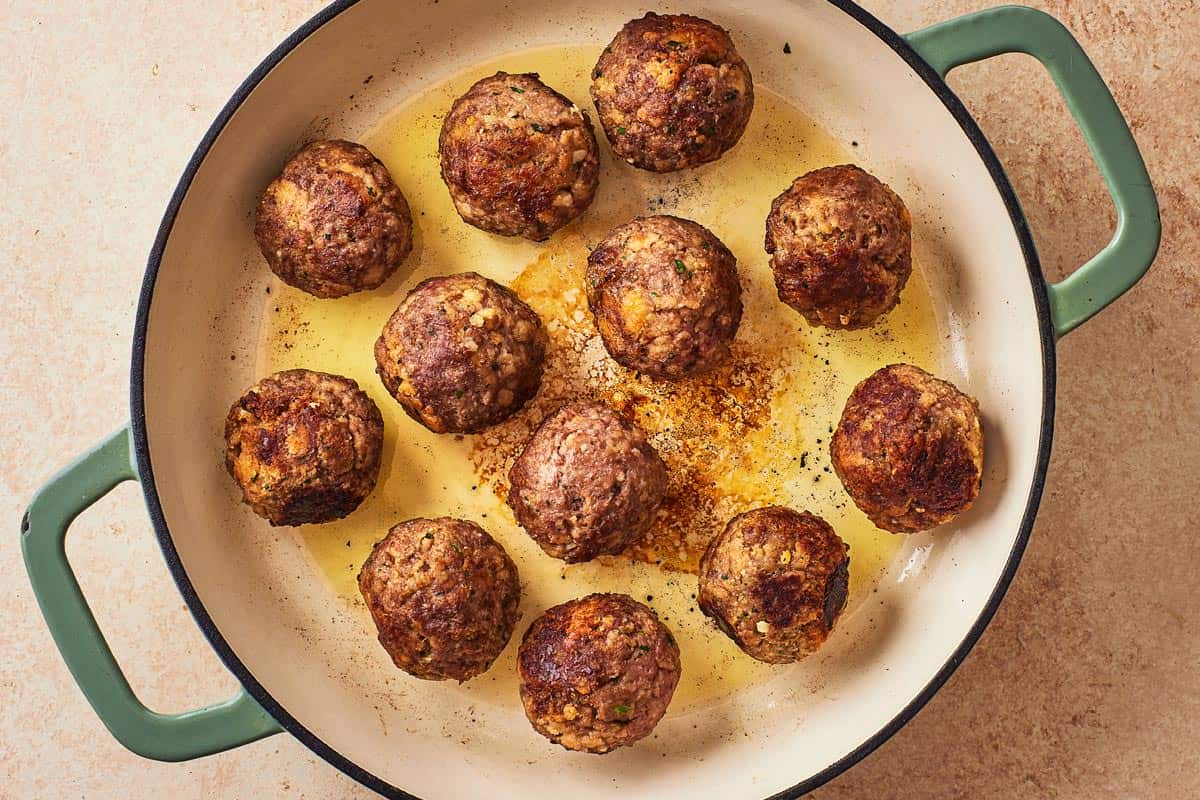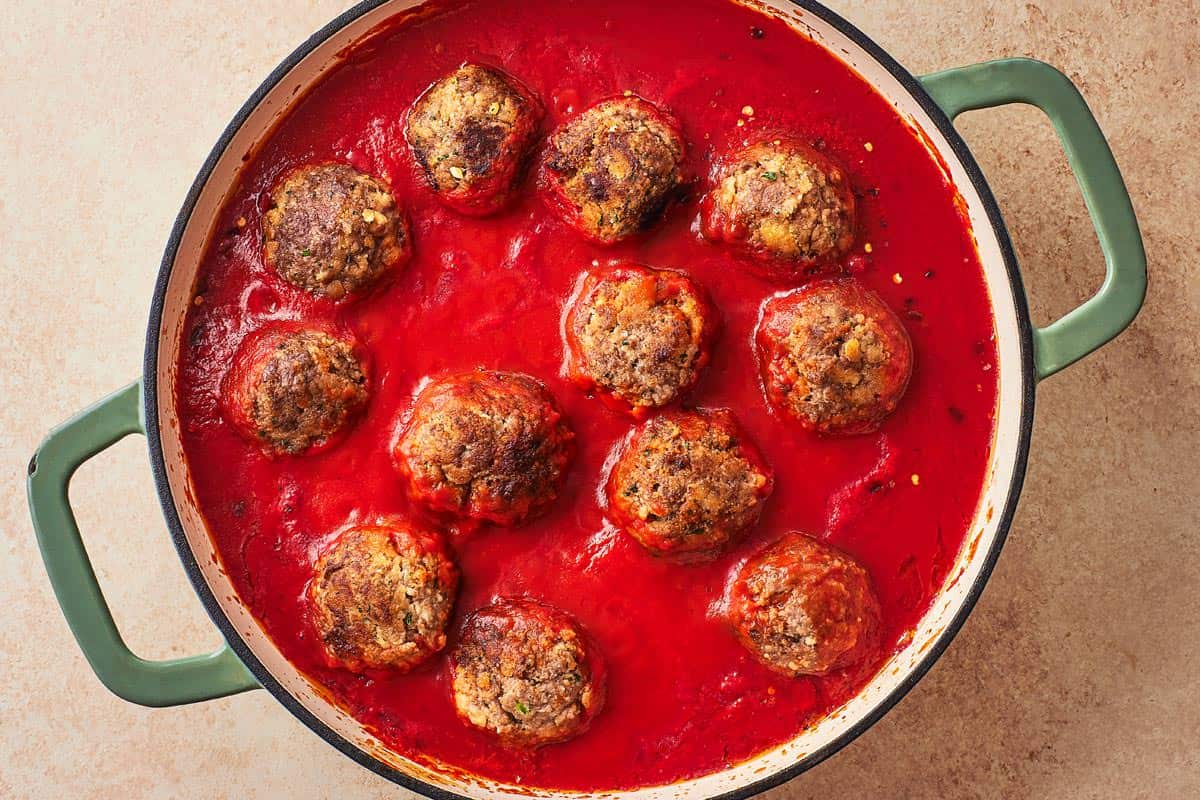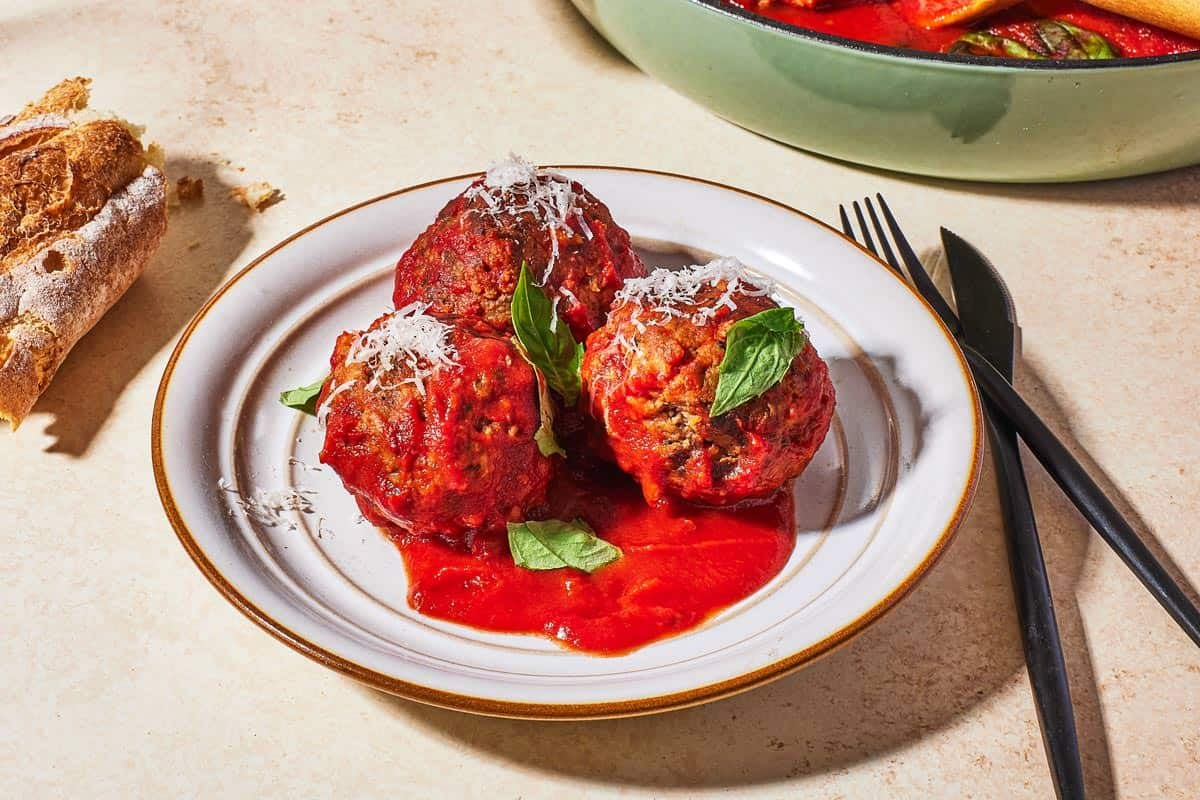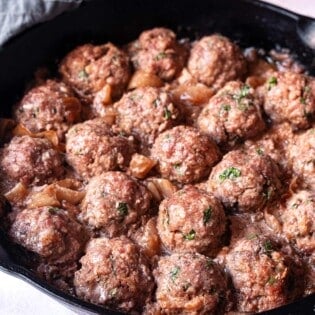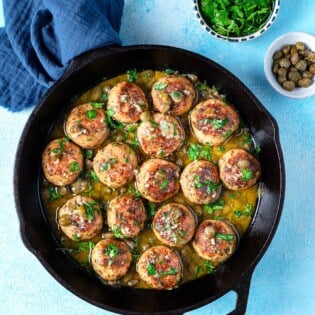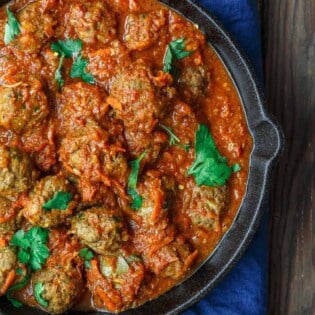Polpette, pronounced pol-pette-eh, is a classic Italian dish with tender, richly flavored beef meatballs simmered to juicy perfection in a simple tomato sauce. What could be more pleasing than this Southern Italian comfort food? How about that everything is cooked in the same pot!
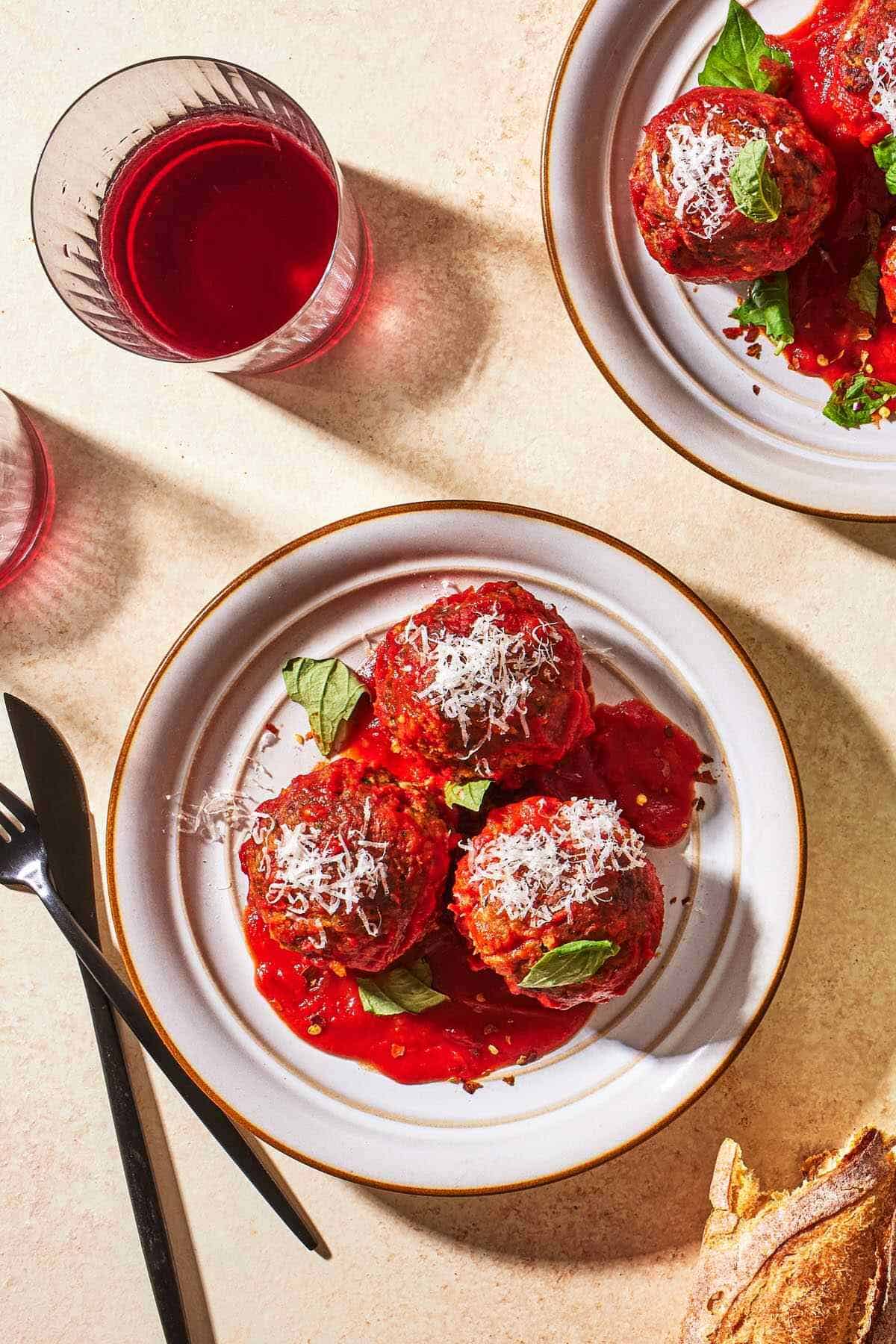
Polpette is a hearty Italian meatball dish that’s beloved on its own, no pasta required! Tender spheres of ground beef seasoned liberally with garlic, herbs, and cheese are briefly browned and then simmered in rich tomato sauce. As the meatballs cook, they absorb juice from the bubbling tomatoes while enriching the sauce with their hearty flavor. It’s a magical transformation.
In the U.S., meatballs are almost always served on top of a plate of spaghetti. But that’s not the case in Italy. Classic Neapolitan meatballs (polpette in sugo) are typically served as a second course, accompanied by a vegetable like roasted artichoke or fennel. The sauce in which they are cooked is tossed with pasta for a first course.
I don’t always serve pasta when I make this dish—sometimes I just want the meatballs and sauce to shine! But I do like to freeze any leftover sauce for when that pasta craving hits. A nice dinner of spaghetti with meatball-flavored sauce always hits the spot.
Table of Contents
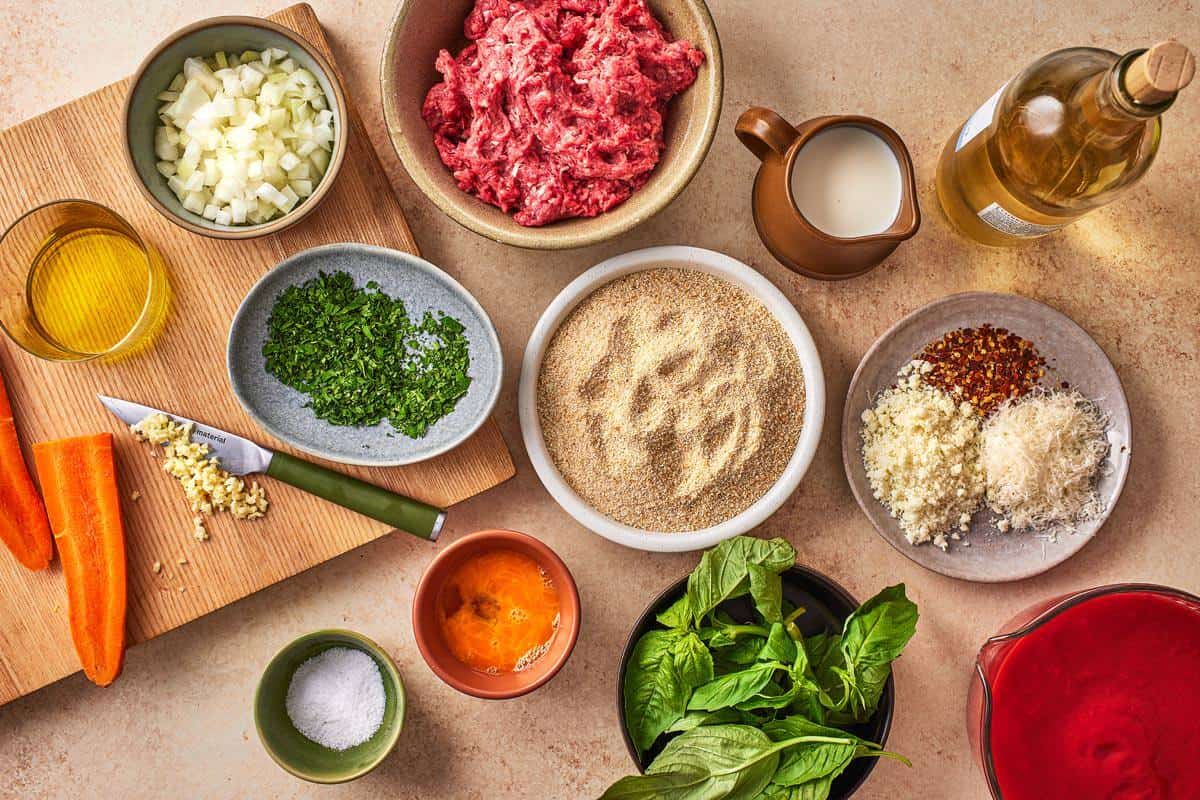
Polpette Ingredients
This polpette recipe has two components: the meatball mixture and the sauce. Happily, everything is cooked in the same pan. Here’s what you’ll need to make it:
For the Meatballs
- Fresh breadcrumbs: When I say fresh, I mean bread that hasn’t been completely dried out or toasted and then ground into crumbs. The best bread for meatballs is one that has a sturdy crumb and is about a day or two old. To break it up, I zap it in a food processor, but you can also use a bread knife to cut it into cubes or just tear it up with your fingers.
- Cold milk or water: Softens the bread so it mixes easily.
- Ground beef: Ideally, you want ground chuck or a similar cut of 80% to 85% percent lean beef. Anything leaner will yield a tough meatball.
- Fresh parsley: The flat-leaf Italian variety adds color and fresh flavor.
- Garlic: One grated clove of garlic brings loads of flavor to the meatballs and also flavors the tomato sauce.
- Egg: Binds the ingredients for your meatballs.
- Parmigiano and pecorino cheeses: You can use one or the other, but I add a sprinkle of both to enrich the meatball mixture.
- White wine (optional): This is my “secret ingredient,” which adds depth to the flavor of meatballs. It’s optional, though; even without it your meatballs will still be delicious.
- Extra-virgin olive oil: You’ll need a few tablespoons to brown the meatballs in the pan, and then a few more to get the sauce going. Use a medium-bodied olive oil such as our Italian Nocellara.
- Salt: Kosher salt enhances the flavor of both the sauce and the meatballs.
For the Sauce
- Chopped onion: Flavors the tomato sauce.
- Tomato passata: Passata is simply bottled tomato purée. I prefer the flavor of bottled to canned, but either one will do. Use purée that doesn’t have added flavors, such as oregano or green pepper.
- Crushed red pepper: This is optional, but I almost always add a little heat to my tomato sauce.
- Carrot: Sweetens the sauce. It’s my other secret ingredient!
- Fresh basil: Perfumes the sauce.
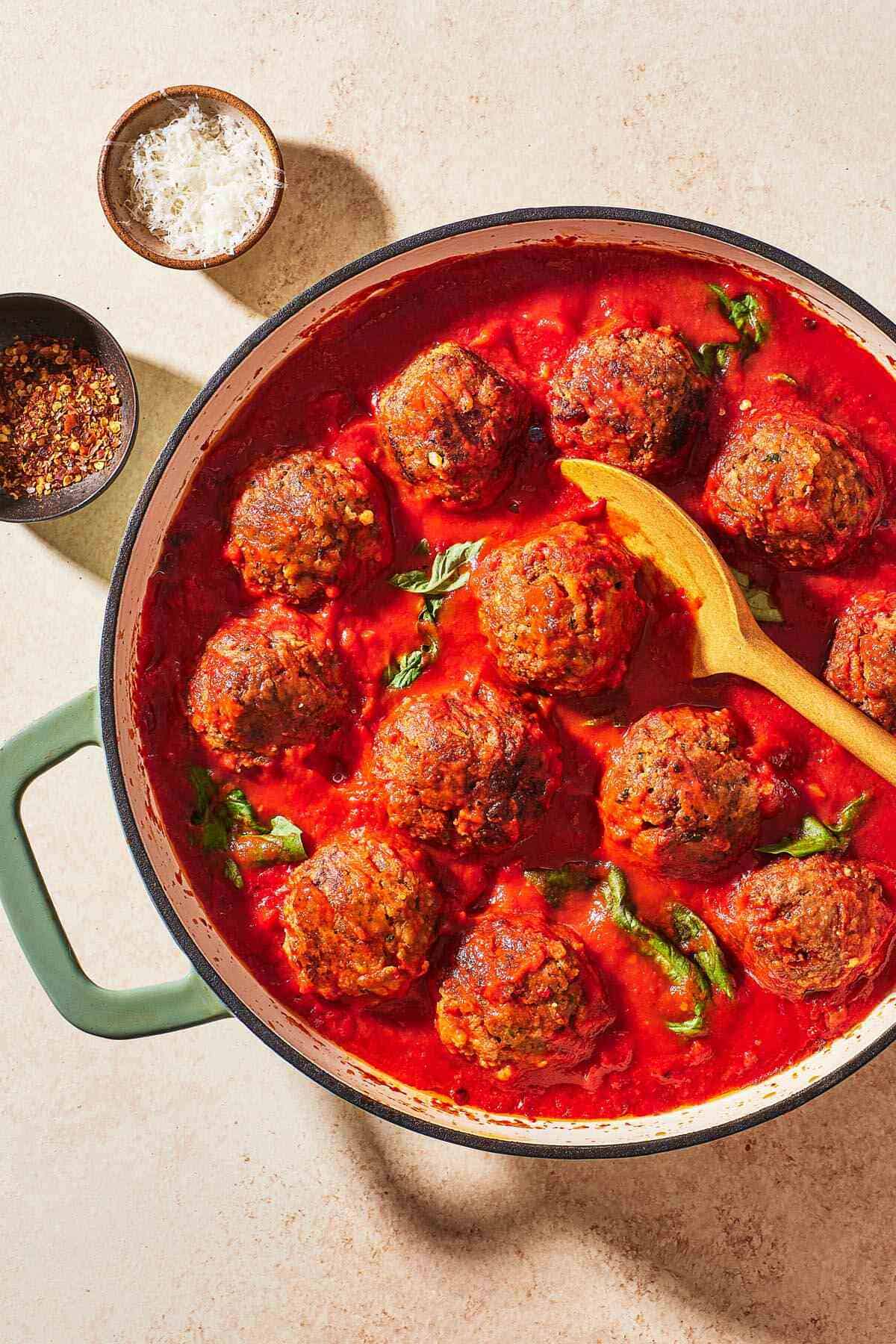
How to Make Polpette
One of the perks of this dish is that both the meatballs and the sauce are made in the same pot or saucepan. There’s no messy deep-frying either–just lightly brown the meatballs before the tomatoes are added to concentrate the flavor and add texture. Here’s how to make them:
Make the Italian Meatball Mixture
- Soak the bread. Place 2 cups of fresh breadcrumbs in a small bowl and cover them with milk or water. Let the mixture sit for about 5 minutes to allow the bread to absorb the liquid.
- Prep the fresh aromatics, adding everything to a large bowl as you go. While the bread mixture soaks, finely chop enough parsley leaves to yield 2 tablespoons. Finely grate or mince 1 large garlic clove. Lightly beat an egg and add, then finely grate in 2 tablespoons each of parmesan and pecorino cheese. Add 2 tablespoons of white wine (if using).
- Make the meatball mixture. Squeeze out the excess milk or water from the soaked bread and add to the mixing bowl. Add 1 pound ground beef, season with a generous pinch of salt, and mix everything together gently until well incorporated. Try not to over handle the mixture as it can toughen the meatballs. I use my hands for this task but a wooden spoon or a silicone spatula works well, too.
- Form the meatballs. Pinch off pieces of the mixture slightly larger than a golf ball (but not as big as a tennis ball!). Roll it into a uniform sphere shape and set it on a wax paper-lined plate or baking sheet. Keep rolling; you should end up with about 12 meatballs.
Cook the Meatballs
- Get ready. Finely chop 1/2 yellow onion. Peel and slice 1 carrot in half lengthwise.
- Brown the meatballs. Choose a Dutch oven or a wide, heavy-bottomed saucepan with somewhat high sides. Film the bottom with olive oil and set over medium heat. Wait until the oil is hot—it should be shimmering, then arrange half the meatballs in the pan. Cook for about 2 minutes, until they are lightly browned on the bottom; then gently roll them around and continue to brown until they are browned on all sides—about 5 minutes total. Careful not to move them around with too much force or they might break apart. Once browned, transfer them to a plate. Brown the rest of the meat of the meatballs and move those to the plate as well.
- Start the sauce. Lower the heat to medium-low. If the pan is dry, add a little more oil. Scatter the onion into the pan and cook until softened. Pour in 5 cups of passata and add a pinch of red pepper flakes. Add the carrot and season with a pinch of salt. Pour 1 cup water into the empty passata bottle or can. Swish it around to pick up any residual purée, then pour this into the pot with the sauce, stirring to combine everything.
- Cook the meatballs and finish the sauce. Put the meatballs back in the pot, arranging them in a single layer. They should be more or less immersed in the sauce. Raise the heat to medium, partially cover the pot and simmer for 15 minutes, lowering the heat if the sauce starts bubbling too much. After 15 minutes, remove the lid and simmer for another 15 to 20 minutes, until the sauce is thickened, and the meatballs are cooked through.
- Finish and serve. Tear a handful of basil leaves and sprinkle them into the sauce. Spoon the meatballs into shallow bowls or deep plates and spoon some sauce on top. Sprinkle with freshly grated Parmigiano cheese and serve.
How to Store Leftover Italian Meatballs
I generally don’t have leftovers of this dish since my family loves it so much. But when I do, I pack the meatballs and leftover sauce together in a container with a tight-fitting lid and refrigerate it. Leftovers will keep for up to four days.
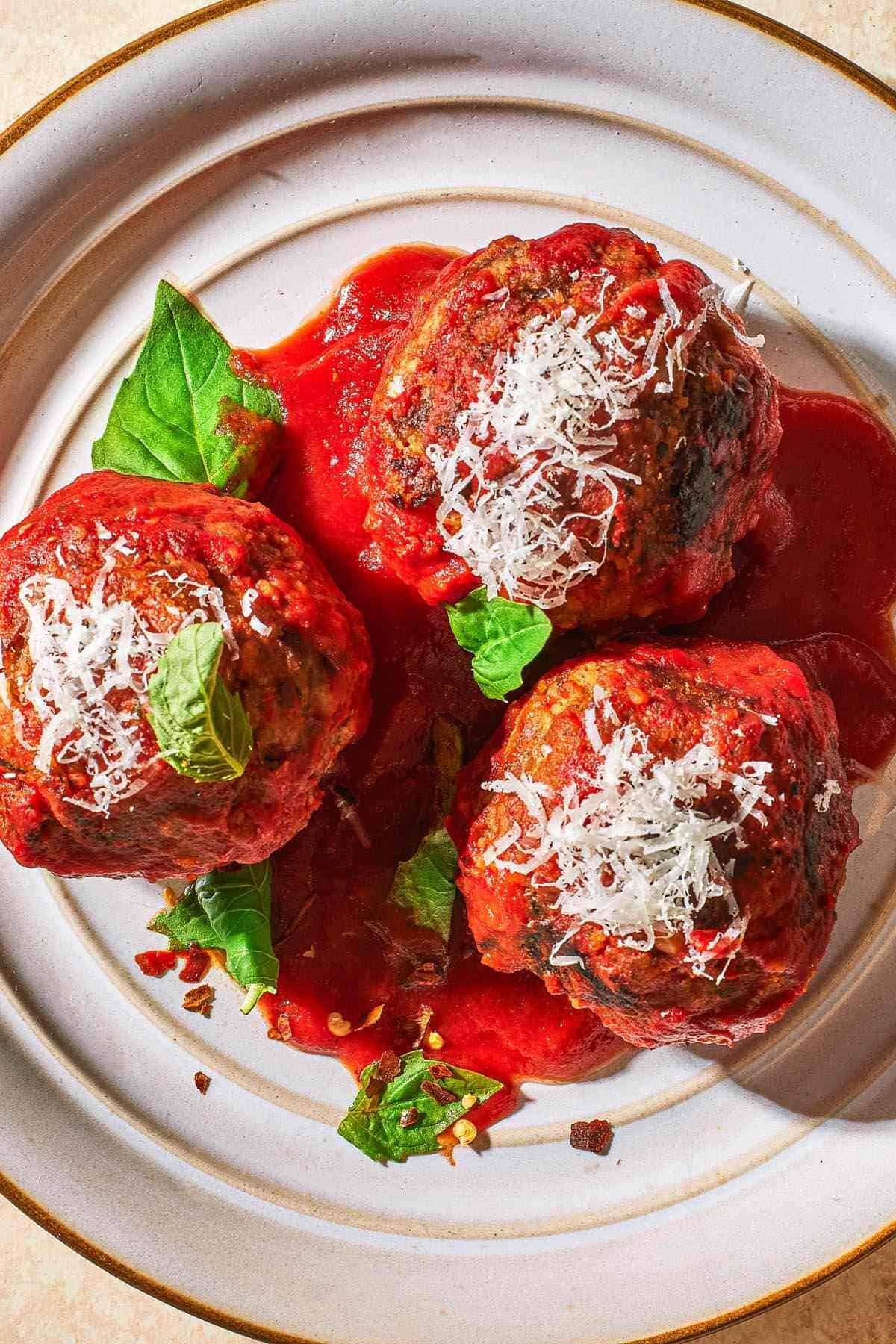
What to Serve with Polpette
Meatballs are versatile and these Italian meatballs are no exception. Of course, you can serve them with pasta. Cook a batch of spaghetti or penne, toss with sauce, and serve with the meatballs on top.
But you don’t have to have spaghetti with your meatballs. I like to serve this dish on its own, with good garlic bread for scooping up the delicious, savory tomato sauce, and a simple green salad on the side. Or, for something a little more casual, make meatball subs.
You’ll Also Like: There’s More than Spaghetti & Meatballs!
Meat and Poultry
Lamb Meatballs with Caramelized Onions
Italian
Chicken Piccata Meatballs
Moroccan and Tunisian
Moroccan Meatballs with a Fresh Carrot Salad
Meat and Poultry
Lebanese-Style Cinnamon Meatballs Recipe (Video)
Browse all Mediterranean recipes.
Visit Our Shop
Save When You Bundle Our Best-Selling Olive Oil Collection!
Four signature extra virgin olive oils designed for everyday use.

Polpette in Sugo (Italian Meatballs in Tomato Sauce)
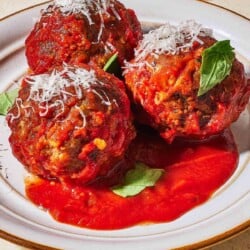
Ingredients
- 1 cup fresh breadcrumbs (see note)
- 3/4 cup whole milk, low fat milk, or water
- 1 pound ground beef, lean ground beef at 85-lean or leaner
- 2 tablespoons finely chopped Italian parsley leaves
- 1 large garlic clove, finely grated or minced
- 1 large egg, lightly beaten
- 2 tablespoons freshly grated parmesan cheese, plus more for serving
- 2 tablespoons freshly grated Pecorino Romano cheese
- 2 tablespoons dry white wine (optional)
- Kosher salt
- 1/4 cup extra-virgin olive oil, plus more as needed
- 1/2 yellow onion, finely chopped
- 5 cups tomato purée, (or tomato passata)
- Pinch of red pepper flakes (optional)
- 1 small carrot, peeled and halved
- Handful of fresh basil leaves
Instructions
- Get ready. In a small bowl, stir together the breadcrumbs and milk. Let sit until the bread has softened, about 5 minutes. Line a large plate or baking sheet with parchment paper and set aside.
- Make the meatball mixture. Squeeze the breadcrumbs to remove excess milk, then transfer them to a large bowl. Add the ground beef, parsley, garlic, egg, cheeses, wine, and a generous pinch of salt. Mix by hand or with a spatula until thoroughly combined.
- Form the meatballs. Pinch off pieces of the mixture—slightly larger than a golf ball—and form them into 12 balls (about 2-inches in diameter). Set the meatballs on the prepared baking sheet as you go.
- Brown the meatballs. In a large heavy-bottomed saucepan or Dutch oven, heat 2 tablespoons of olive oil on medium until the oil shimmers. Add half of the meatballs and carefully sear, turning until they’re lightly browned on all sides, about 5 minutes in total. Repeat the second half, returning the browned meatballs to the lined plate as you go.
- Start the sauce. Lower the heat to medium-low and add 2 more tablespoons olive oil to the pan where you browned the meatballs. Stir in the onion and cook until softened, about 5 minutes. Stir in the tomato passata, carrot, and a pinch of red pepper flakes (if using). Pour 1 cup water into the empty passata bottle or can and swish it around, then pour this into the pan, stirring to combine everything.
- Simmer the meatballs. Carefully arrange the meatballs in the pan in a single layer. Raise the heat to medium, then cover the pan partially to bring the sauce to a simmer. Cook for 15 minutes, adjusting the heat to maintain a gentle simmer. Remove the lid and simmer on medium-low heat until the sauce is nicely thickened and the meatballs are cooked through, about 15 minutes more.
- Finish and serve. Tear or roughly chop the basil leaves and gently stir them into the pan. Transfer the meatballs to shallow serving bowls or deep plates and spoon some sauce on top. Sprinkle with freshly grated parmesan cheese and serve.
Notes
- This recipe will make about 24 large meatballs and will serve up to 6 people.
- Use stale bread: The best bread for these meatballs is one that has a sturdy crumb and is about a day or two old. Zap it in a food processor, use a bread knife to cut it into cubes, or just tear it with your fingers.
- Try not to over handle the meatball mixture. Mix until everything is well-incorporated, but try not to overwork it or the meatballs will toughen.
- Visit our shop to browse quality Mediterranean ingredients including olive oils, honey, jams, and spices.

